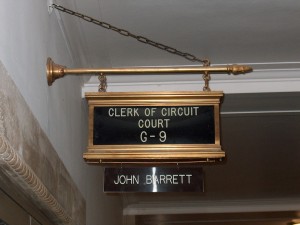Don’t Be Afraid to Go to Law School, Minority Students Told
Lovell Johnson recalls a guy he looked up to in high school, a guy he thought could really succeed in life. Several years later, he ran into the guy. The guy was driving a cab. Nothing wrong with driving a cab, Johnson said as he counted the anecdote. But the guy said to him he could have gone to law school and made more of himself. And he didn’t.
Johnson decided he didn’t want to be like that guy. That guy was afraid to apply to law school; he was afraid to fail. So was Johnson. But Johnson overcame that, took the plunge, became a lawyer, and has been a well-known and successful Milwaukee County assistant district attorney for years.
“Don’t be afraid,” Johnson told about 150 Milwaukee high school students Thursday at a Youth Law Day conference at Eckstein Hall. “Don’t let anybody tell you you can’t do it.”
That was one of the strong underlying themes as the students from a half dozen schools got a dose of knowledge about what it’s like to be a lawyer and a lot of encouragement to pursue that possibility.


